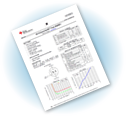Don’t put maintenance on the backburner

The COVID-19 crisis presented companies across different sectors with unprecedented challenges, including temporary shutdowns and the necessity to postpone regular maintenance and testing. However, periodic checks are essential to keep equipment up and running. Here Mark Convery of Houghton International, discusses the importance of keeping up with regular maintenance in exceptional circumstances.
What may seem like a financial burden can actually end up saving money in the long run, preventing more costly repairs or replacements as well as reducing unplanned down-time.
According to international management consultancy, Roland Berger, the COVID-19 crisis is the biggest one faced so far by the industry at large. Their advice is to focus on long-term investments and to develop strong strategies to mitigate risks.
In line with this advice, neglecting equipment maintenance should be avoided. This is because any change, even a minor breakdown, could potentially reduce the overall efficiency of a whole production line, leading to major production losses.
For example, if a conveyor motor stops working, the other motors on the line will have to pick up the slack. This will result in stresses which may exceed the recommended operating parameters of the line and could reduce the expected lifespan of the motors. Thus, regular inspection will not only save the cost of replacing machines or parts, it will also reduce downtime and increase production.
Periodic maintenance
It can be tempting for many to put off regular maintenance to save on costs and wait until a machine is actually broken to carry out inspection, testing or maintenance. However, the total lifecycle cost has to be considered, since condition monitoring and preventive maintenance can help maximise ROI by detecting potential threats before they lead to a breakdown.
Periodic testing will also ensure the equipment performs safely both for the machines and the operators. A range of tests can be carried out in-situ to identify any problems early on with minimal disruption. For instance, dielectric testing is designed to assess the condition of windings and diagnose any early signs of deterioration and aging, allowing the owner to plan repairs ahead of a catastrophic failure and extend the life of the asset.
To do this, Houghton International uses a static electric motor analyser, which can find early indications of insulation weakness and faults in windings, between phases, coil-to-coil and in groundwall insulation.
In many businesses testing is routinely implemented several times a year or during scheduled outages. Recommendations on how often tests are undertaken are based on a range of factors such as criticality, past history, size, repair costs, availability of spares, daily starts and stops and ease of access, amongst others.
An effective planned maintenance strategy will ensure that during challenging times, machine owners and operators minimise the potential risks on their machines and workers’ safety. At Houghton International, we provide a wide range of testing options, including dielectric and partial discharge testing, at our customers’ premises or in our workshop, to help our machine owners make informed, data-led decisions about their maintenance strategy.
Similar articles
More from Houghton International
- Don’t put maintenance on the backburner 13th May 2021
- How static motor testing can support preventative maintenance 24th March 2021
- Newcastle engineering business celebrates record year 21st March 2019
- The financial impact of machine down-time on UK industry 12th February 2019












Write a comment
No comments